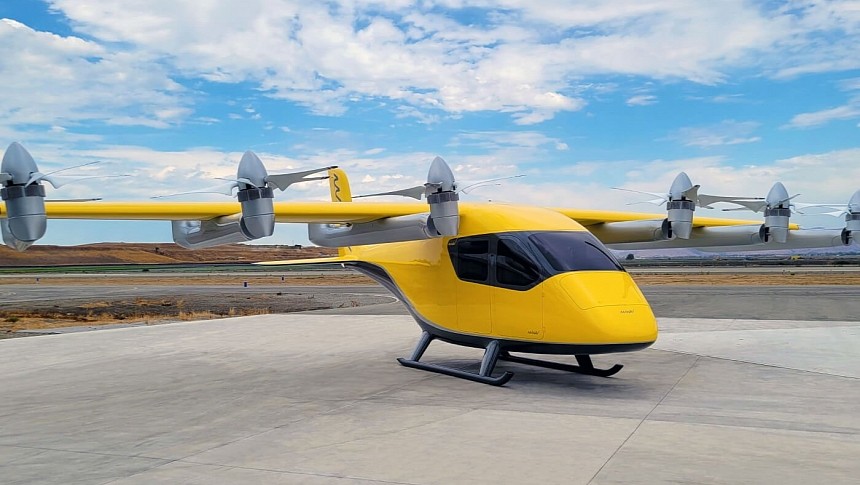Advanced Air Mobility (AAM) will link California to Japan unexpectedly – not literally, but through introducing a Californian-made eVTOL (electric vertical take-off and landing) into Japan's national air transportation system. It's not just about electric, zero-emission alternatives to conventional flight. These two international partners aim for something even more ambitious – autonomous cars operating in the sky.
The issue of autonomous vehicles isn't even sorted out on the ground, yet this isn't stopping companies in the emerging AAM industry from working on pilot-free alternatives to aircraft. Wisk Aero and Japan Airlines (JAL) are confident in a future where self-flying, all-electric aircraft will take over the skies not just in the country but the entire Asia-Pacific region.
Several airlines worldwide have pre-ordered eVTOLs that are currently undergoing certification. The one that seems closer to the finish line is United Airlines, which has committed to no less than 100 electric air taxis made by Archer Aviation together with the automotive group Stellantis.
In the Asia-Pacific region, JAL is one of the latest to join the club. It recently selected another Californian manufacturer, Wisk Aero, to tackle electric and autonomous flights.
The new collaboration is complex, unfolding on multiple levels. Obtaining the local type certification approval is only the primary layer. The two will also establish a framework for future maintenance, repair, and overhaul operations.
The airline's technical branch, JAL Engineering (JALEC), will play the leading role in this. On the other hand, they need to work with authorities on setting up an adequate legal environment for future autonomous operations. Wisk and JAL are planning to initiate demonstration flights in Japan. Still, no official deadline has been set up yet.
At the beginning of last year, Wisk announced that its 6th-generation eVTOL was the first-ever candidate for this type of aircraft (all-electric and autonomous) in the US. It also claimed to be among the top well-founded AAM companies worldwide. This was mostly thanks to Boeing, the aviation giant that pumped $450 million into the electric aviation startup.
Later that year, Boeing and its joint venture partner, Wisk, introduced an important document for AAM. It was a roadmap for future autonomous passenger flights, with recommendations covering regulatory and social aspects and technological issues.
With San Francisco and New Zealand offices, Wisk is positioned to become an international AAM player. The latest version of its self-flying passenger aircraft made its debut in 2022, five years after Wisk had become the first in America to fly an autonomous, electric air taxi.
The Wisk Aero eVTOL features 12 rotors that enable it to reach a cruising speed of approximately 100 mph (161 kph) and to cover short distances of up to 25 miles (40 km) on a single charge.
Several airlines worldwide have pre-ordered eVTOLs that are currently undergoing certification. The one that seems closer to the finish line is United Airlines, which has committed to no less than 100 electric air taxis made by Archer Aviation together with the automotive group Stellantis.
In the Asia-Pacific region, JAL is one of the latest to join the club. It recently selected another Californian manufacturer, Wisk Aero, to tackle electric and autonomous flights.
The new collaboration is complex, unfolding on multiple levels. Obtaining the local type certification approval is only the primary layer. The two will also establish a framework for future maintenance, repair, and overhaul operations.
The airline's technical branch, JAL Engineering (JALEC), will play the leading role in this. On the other hand, they need to work with authorities on setting up an adequate legal environment for future autonomous operations. Wisk and JAL are planning to initiate demonstration flights in Japan. Still, no official deadline has been set up yet.
At the beginning of last year, Wisk announced that its 6th-generation eVTOL was the first-ever candidate for this type of aircraft (all-electric and autonomous) in the US. It also claimed to be among the top well-founded AAM companies worldwide. This was mostly thanks to Boeing, the aviation giant that pumped $450 million into the electric aviation startup.
Later that year, Boeing and its joint venture partner, Wisk, introduced an important document for AAM. It was a roadmap for future autonomous passenger flights, with recommendations covering regulatory and social aspects and technological issues.
With San Francisco and New Zealand offices, Wisk is positioned to become an international AAM player. The latest version of its self-flying passenger aircraft made its debut in 2022, five years after Wisk had become the first in America to fly an autonomous, electric air taxi.
The Wisk Aero eVTOL features 12 rotors that enable it to reach a cruising speed of approximately 100 mph (161 kph) and to cover short distances of up to 25 miles (40 km) on a single charge.








